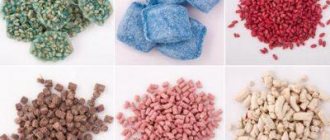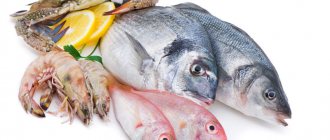The dog picked up rat poison
Vivid symptoms of rat poisoning in dogs are quite a serious danger to the life of the animal. Therefore, recognizing the symptoms of such poisoning is a top priority for every owner caring for their pet. You need to know and be able to distinguish not only the clinical signs of intoxication, but also imagine how to provide first aid to a dog before contacting a veterinarian.
How does poisoning occur?
Rat poisons, of which there are several varieties, have a rather unpleasant odor. However, manufacturers of rodent poison give it a meat aroma, which, unfortunately, attracts not only mice and rats, but also dogs. Most often, poisoning occurs during a walk, when the animal can catch and eat a rodent that has already taken the poison.
It happens that a four-legged friend eats rat bait disguised as meat, treated with meat flavoring. Pet owners should be very careful when walking. They should know that 80% of dogs can be saved if promptly contacted by a veterinarian, but with repeated intoxication, the chances of recovery are reduced, since the animal develops increased sensitivity to these poisons.
Types of rat poisons
It is no coincidence that we want to draw your attention to this issue. It is very important to know which rat poison caused the poisoning. As the name suggests, these substances are designed to kill rodents. They are used to make baits, usually grain-based. They produce paste, granules, gels and ready-made briquettes. Rodenticides are divided into two groups:
- acute action;
- chronic and subacute action.
On sale you can only find baits made using poisons of the second group, since they are less toxic to humans and animals. On the territory of Russia, a limited number of rodenticides are permitted for use, which are included in the lists of the catalog of agrochemicals and pesticides of Rospotrebnadzor.
Rodenticides that are classified as rat poisons:
- bromadiolone;
- brodifacoum;
- triphenacin;
- isopropylphenacin;
- ethylphenacin;
- flocumafen;
- zinc phosphide;
- ratsid (alpha-naphthylthiourea).
Symptoms of rat poison poisoning in a dog and treatment depend on the group the rodenticide belongs to.
The effects of poisons on a dog's body
The negative effects of rat poison, as well as the severity of poisoning, are classified according to the composition of the toxins that make up it. The most common bait agents are considered to be first-generation anticoagulants (triphenacin, ethylphenacin, warfin and others). If such poisoning by rat poison occurs in a dog, the symptoms and consequences will not be very severe. Dogs are sensitive to warfarin, for them the lethal dose is 6 mg/kg body weight.
Second generation anticoagulants include: flocumafen, brodifacoum and bromadiolone. Compared to the chemicals described above, they are eliminated from the body much more slowly, and they also have the ability to accumulate. Symptoms of poisoning in a dog with rat poison of this group will be more pronounced, and treatment will take a long time.
Another dangerous drug that can kill not only a rodent, but also a dog is “Ratsid”. Today it is not used very often because it is very toxic. If your dog eats such bait, he will very soon develop seizures - symptoms of rat poisoning in a dog. The dose that can be fatal is between 60 and 150 milligrams per kilogram of weight. The product is available in the form of a 10% gel.
Contraindications
Hypersensitivity, incl. to ethionamide, pyrazinamide, Niacin (nicotinic acid) and other drugs similar in chemical structure, epilepsy, tendency to seizures, poliomyelitis (including a history), severe hepatic-renal failure, mental illness, severe atherosclerosis, visual diseases and peripheral nerves, a history of toxic hepatitis associated with taking isoniazid or its derivatives (ftivazid, metazide, opiniazid), phlebitis (iv administration).
Professional compositions
And another remedy that is often used in the fight against rodents is zinc phosphide. It is not available for free sale. It can only be used by rodent exterminators. This is due to its high toxicity. A dog that has eaten bait with this most dangerous poison begins to destroy the stomach lining and nervous system. An antidote must be administered immediately. Only a veterinarian can do this. Therefore, the owner must be very attentive and, if suspicious symptoms appear, immediately take his friend to the clinic for testing.
The danger of such situations is that most owners cannot distinguish the symptoms of rat poisoning in a dog from other diseases, as well as poisoning. In this regard, they waste time by not providing first aid to their pet and do not go to the clinic. Often this can cause irreversible consequences in the animal’s body.
Symptoms of anticoagulant poisoning and treatment
Rat poison, which contains anticoagulants, reduces blood clotting. As a result, severe internal bleeding develops. Bromadiolone and brodifacoum are the most commonly used poisons that have these properties. The speed at which symptoms of poisoning appear depends on the amount of active substance in the rat bait.
Bromadiolone contains little of it, it acts slowly, and symptoms of poisoning in dogs from rat poison of this group can appear within five days. On a dog poisoned by brodifacoum, the poison can act instantly. These toxic substances are eliminated from the body quite quickly.
Symptoms of poisoning in a dog with rat poison, which contains anticoagulants, appear:
- bleeding gums;
- bleeding from the nose;
- diarrhea, which may be bloody;
- blood in the urine;
- vomiting;
- pallor of the mucous membranes;
- cough with bloody foam;
- lack of appetite.
Such manifestations of the disease in general or the appearance of one of them is a signal to immediately contact the clinic. Another characteristic symptom of rat poisoning in dogs is a lethargic state. It is manifested by lethargy, retardation of actions, drowsiness, and difficulty breathing.
The antidote for dogs poisoned by such poisons is the administration (intramuscular) of vitamin K. Treatment of the disease is long-term - more than a month. It ends only when the blood test returns to normal. Treatment is carried out in a clinical setting. The doctor administers two to five milligrams of vitamin per kilogram of the animal’s weight. But if you are sure that intoxication occurred precisely with a first-generation anticoagulant, then the dose can be reduced to 0.5 milligrams per kilogram of weight.
Important! If a dog's poisoning is caused by anticoagulants, when providing first aid, do not rinse the stomach and induce vomiting. This will only increase the bleeding.
Side effects of Isoniazid
Isoniazid is one of the most effective anti-tuberculosis drugs. It is processed in the liver. With long-term use, the drug has a detrimental effect on organ cells. The medicine is excreted by the urinary system.
In case of kidney diseases, the active substances of the drug accumulate in the body. This leads to an overdose. To avoid this condition, first read the contraindications. When taking Isoniazid the following side effects occur:
- discomfort in the heart area;
- allergic reaction;
- nausea, vomiting and abdominal pain;
- respiratory dysfunction;
- decreased performance, apathy;
- coma;
- dizziness and headache;
- paralysis and convulsions;
- heavy menstruation;
- toxic liver damage.
When treated with Isoniazid, the level of vitamin B6 decreases. This phenomenon is dangerous for people with HIV infection, diabetes, uremia or alcoholism. In such a situation, taking Pyridoxine in a dosage of no more than 50 mg per day is indicated.
The use of the drug affects the state of the central nervous system. As a result, headaches appear, sleep deteriorates, and depressive disorders may develop. In some cases, coordination of movements worsens, and memory deterioration is observed.
Isoniazid is taken with extreme caution in the presence of chronic diseases. The active components of the drug contribute to their exacerbation. Such ailments include:
?
- hepatitis;
- heart failure;
- epilepsy;
- psoriasis;
- atherosclerosis,
- phlebitis.
Side effects are most often caused by the following factors:
- elderly or children's age;
- predisposition to allergies;
- tendency to thrombosis;
- deviations in the function of the endocrine system;
- liver pathologies;
- drinking alcohol;
- violation of the rules for combining isoniazid with other medications;
- kidney diseases.
Important! The use of Isoniazid during pregnancy is possible only in case of urgent need.
Signs of a drug overdose appear on average an hour after oral use. The intensity of symptoms depends on the dosage of the drug. The skin of the body becomes moist and pale. Body temperature rises. Urination becomes more frequent. Pain appears in muscles and joints.
Lack of medical attention will result in a slow heart rate. This risks falling into a coma, which usually lasts from 24 to 48 hours.
There are acute and chronic forms of intoxication. Symptoms of acute poisoning occur within half an hour after using the medicine.
The condition is characterized by severe vomiting, stool disturbances and stomach pain. High doses of isoniazid often cause epileptic seizures.
Chronic intoxication produces a cumulative effect, that is, it does not appear immediately. It is characterized by pathology of the optic nerve. Muscle weakness and cramps occur. This condition poses a danger to the patient's life.
An overdose is diagnosed by testing the patient's blood for the concentration of Isoniazid. The accumulation of medication above 10 mg 60 minutes after taking the tablets is considered critical. If there is a deviation from the norm, we are talking about an acute type of poisoning.
Symptoms of poisoning from poisons containing vitamin D3
Poisoning an animal with poison, which includes a large amount of vitamin D3, causes kidney failure with further death, in the absence of qualified assistance within two to three days.
Symptoms:
- frequent urination;
- strong thirst;
- unpleasant odor from the mouth, reminiscent of urine;
- lethargic state.
Although a special antidote does not yet exist against this poison, timely therapy carried out in veterinary clinics leads to the complete recovery of animals. The course of treatment includes the use of sorbents and diuretics. Its duration is at least 1.5 months.
What is Isoniazid?
The drug is a white tablet, which is produced primarily for people with tuberculosis. It is a derivative of isonicotinic acid hydrazite. One tablet contains the following substances:
- isoniazid;
- calcium hydrogen phosphate;
- talc;
- magnesium stearate;
- corn starch;
- sodium edetate;
- colloidal silicon dioxide.
Often the drug is added to edible bait, which is given to the animal for the purpose of poisoning.
It is a vital medicine for humans, therefore it is widely available in pharmacies and is available without a prescription. This is taken advantage of by cruel people who poison dogs that are highly sensitive to the drug. Cats can also become poisoned and die. Once in the cat’s body, “Isoniazid” or “Tubazid” acts on the central nervous system, which inhibits the functions of vision, hearing, and movement. A domestic cat can swallow poison if the owner has tuberculosis and leaves the drug in a place accessible to the pet. A pet can be deliberately poisoned by heartless neighbors who do not tolerate animals by adding poison to their food.
Useful materials:
- Cutaneous horn General description of the disease Cutaneous horn on the forehead or face (ICD 10 code - L57.0) -...
- Itching and odorless discharge Main causesBefore considering the factors that provoke the appearance of discharge that has a sour odor, it is necessary to immediately note...
- Normal temperature in animals Normal temperature in different types of animals Veterinary services Day hospital for animals Veterinary certificates Vaccination…
- Papillomas in dogs photo How to notice papillomaIf the virus entered the body of a dog with good health and good living conditions,…
Calcium cyanide poisoning
Bromethalin is a potent substance that causes (in large quantities) central nervous system disorders and swelling of the meninges. Failure to provide timely assistance leads to death. What are the symptoms of a dog being poisoned by rat poison containing calcium cyanide? These include:
- movement disorders;
- loss of coordination;
- paralysis of individual limbs or the entire body;
- convulsions.
If a small dose of poison enters the animal’s body, then after two days the symptoms of poisoning in the dog with rat poison of this type will appear. If the dog received a large amount of a toxic substance, the reaction will follow within an hour. Although modern products used for deratization contain a small dose of calcium cyanide, severe poisoning is therefore unlikely.
There is no antidote for this poison. Helping the animal comes down to the use of activated carbon or other sorbent and diuretics. Gastric lavage is required.
Measures to eliminate side effects
If you notice symptoms of isoniazid poisoning, notify medical personnel immediately. Until the ambulance arrives, take the following measures:
- Place the patient in a horizontal position, preferably on his side;
- If you are conscious, you must drink at least 3 liters of clean water to cleanse the intestines (if the drug was taken orally);
- You need to take any sorbents.
Antidote
To eliminate the symptoms of overdose, gastric lavage is performed. Pyridoxine is used as a supporting agent. The antidote replenishes the level of vitamin B6. If there are seizures, Diazepam is prescribed. In severe forms of poisoning, hospital treatment is indicated.
Photo 2. Diazepam tablets 10 mg, 30 tablets, manufacturer - AtypykFrance.
As additional therapy, if necessary, the patient is prescribed physiotherapy and massage. Liver cleansing is carried out using Lipamide or Methionine.
Attention! Isoniazid should not be taken together with contraceptives and alcohol. You should check with your doctor about the possibility of combining it with other medications.
Aluminum and zinc phosphides: symptoms and advice from doctors when a dog is poisoned with rat poison
These are very toxic substances that are part of rodent control products. For deratization they are used less often than others. Once in the stomach, phosphides react with hydrochloric acid and release phosphine gas, which damages the liver.
Symptoms:
- nausea and vomiting;
- severe flatulence;
- the appearance of fear in the animal;
- stomach ache.
Veterinarians strongly recommend against self-medication for such poisoning, since the gas released through vomiting is poisonous. It also poses a danger to people. Doctors inform that there is no antidote to these substances, but timely therapy is effective. Treatment procedures are carried out outdoors, and if this is not possible, then doors and windows are opened.
Therapy includes:
- Antacids (“Maalox”), neutralizing hydrochloric acid contained in the stomach. This reduces gas formation.
- Activated carbon and gastric lavage.
First aid
Is it possible to save an animal and will it not die if it is poisoned by rat poison? Of course, it’s possible, but she needs to be helped quickly. So, if your dog has swallowed an anticoagulant or any other poison, you should immediately:
- induce vomiting in various ways;
- perform gastric lavage with a weak solution of potassium permanganate;
- force the dog to eat any, no matter what, adsorbent;
- give sodium sulfate, a common saline laxative;
- Give the dog mucous decoctions, infusions of flaxseed, rice or rolled oats.
Under no circumstances should attempts to induce vomiting be started after a long period of time, after several hours of poisoning. During this time, the poison had already passed into the intestines. It is not recommended to try to induce vomiting if your pet has prolonged seizures and fever.
It is especially not recommended to feed a dog during poisoning with milk, eggs or castor oil. The substances contained in these products can react with phosphides and increase the poison.
In case of poisoning with anticoagulants, phytomenadione can be given from tablets and medications. It should be administered subcutaneously at a dosage of 2-4 mg per kg of dog weight.
There are no antidotes for rats, but their effect is slowed down with 1% tannin solutions.
In case of phosphide poisoning, give a 0.6% solution of copper sulfate or baking soda orally strictly as prescribed by the doctor.
First aid for poisoning will save your pet's life
If the composition of rat poison is unknown
If the owner does not know the substances that make up the poison, general therapy is carried out. It is effective and universal for poisoning with various substances:
- ten days the dog is given vitamin K injections;
- droppers with glucose, maintaining the general condition of the animal;
- cardiac medications and diuretics are used.
If treatment is started late, and the animal’s condition is alarming, drugs are prescribed to restore liver and kidney function, relieve swelling, and a blood transfusion is often required.
Interaction
Antacids, especially aluminum-containing ones, reduce the absorption of isoniazid. Strengthens (mutually) the effect of other anti-tuberculosis drugs. When taken simultaneously with streptomycin, the excretion of both drugs by the kidneys slows down, and with rifampicin, the risk of hepatotoxicity increases. Hepatotoxicity is potentiated by isoflurane. Vitamin B6 and glutamic acid reduce the likelihood of side effects, MAO inhibitors increase it. Suppresses metabolism, increases plasma concentrations and enhances the effect of indirect anticoagulants, theophylline, benzodiazepines, carbamazepine, ethosuximide; reduces the concentration of ketoconazole. Strengthens the toxic effects of cycloserine, disulfiram, enflurane, phenytoin, paracetamol and other drugs that have hepato- and neurotoxic effects.
Poisoning a dog with rat poison: symptoms and treatment at home
It seems to us that we have described the symptoms in sufficient detail. Now it is necessary to explain what the pet owner should do before meeting with the veterinarian. If symptoms of rat poison poisoning appear in a dog, first aid includes the following procedures:
- inducing vomiting (to do this, you need to put table salt on the root of the animal’s tongue);
- it is necessary to give polysorb, activated carbon;
- rinse the stomach with water at room temperature.
- pour water into the animal’s throat using a syringe or a large syringe without a needle;
- give a laxative.
These recommendations are suitable for situations where the owner knows what substance caused the poisoning, since it is strictly forbidden to lavage the stomach, give a laxative and induce vomiting if the poisoning is caused by anticoagulants.
If more than four hours have passed since the animal poison entered the body, it is not advisable to induce vomiting, since the toxic substance that entered the stomach was absorbed into the blood. As a rule, a poisoned dog has no appetite, but if it asks for food, do not feed it and do not limit its water.
Overdose
Symptoms: lethargy, dizziness, nausea, vomiting, blurred vision and hearing, visual hallucinations, slurred speech, disorientation, hyperreflexia, respiratory depression, metabolic acidosis, convulsions, stupor, coma, hyperglycemia, glycosuria, ketonuria.
Treatment: mechanical ventilation, intravenous short-acting barbiturates, intravenous vitamin B6 (in a dose equivalent to the dose of isoniazid; if the dose is unknown, administer 5 g of vitamin B6 in the form of a 5% aqueous solution every 5–30 minutes until the seizures stop or restoration of consciousness), sodium bicarbonate (with the development of metabolic acidosis), diazepam, sodium thiopental, after the cessation of convulsions - gastric lavage, taking activated charcoal and laxatives, osmotic diuretics, forced diuresis, hemodialysis; if it is impossible to carry out hemodialysis, peritoneal dialysis simultaneously with forced diuresis.
Consequences of poisoning
Veterinarians warn that even knowing the symptoms of rat poisoning in a dog, treatment at home is not always effective. After an intensive treatment course, the veterinarian will perform laboratory tests and, if necessary, prescribe further treatment.
Complications after poisoning are usually associated with liver function. Sometimes there are problems with restoring blood clotting. Bleeding during injuries and bleeding from the gums are possible.
Care during recovery
After your dog is treated at the clinic, it will need good care at home to recover.
- On the first day, do not feed, so as not to unnecessarily burden the body and allow it to completely remove toxins;
- On the second day, give broth or light liquid porridge with broth (rice, buckwheat or oatmeal are ideal);
- In the first few days, do not give difficult-to-digest porridges - semolina, millet porridge or barley, as well as foods that are difficult for the stomach - pasta and bread, potatoes and any artificial food - dry or canned;
- Feedings are done in small portions and often - up to 5 times a day.
So that this doesn't happen again
Any owner who has experienced poisoning of their pet would like to prevent similar situations in the future. After all, even if everything ended well, after suffering poisoning, the animal’s sensitivity to poison increases significantly, and therefore the dog may not survive a second such case. What can you do to keep your pet out of trouble? The best options are organization, training and discipline; more effective ways to protect yourself from this have not yet been invented.
- The dog must clearly know that it is forbidden to pick up anything on the street, as well as take treats from strangers, and the only food that can be eaten is from a bowl or from the hands of the owner.
- The dog must be able to stop and stop what it is doing (whatever it is) on the command “no” or “fu” - then attempts to hunt rats can be stopped before the dog feasts on the prey.
- The owner himself is obliged to observe safety measures if he is baiting rats on his own territory: do not put bait in places accessible to the dog, do not leave the carcasses of dead rats (they are buried at least half a meter deep), do not allow the dog to move freely around the yard and house when you are carrying out pest control.
- Also, the owner should not be careless about walking his pet and should not let him go uncontrollably, without a leash and muzzle, especially if the dog does not fulfill the first two conditions and does not listen to commands (this applies primarily to teenage puppies). We are truly responsible for those we have tamed, and we must ensure the safety of our pet by teaching it the right behavior - just as we do with children.
We wish that in practice you never have to apply our recommendations from this review, and that your dog will always be healthy!
- Author: Elena
Rate this article:
- 5
- 4
- 3
- 2
- 1
(0 votes, average: 0 out of 5)
Share with your friends!











